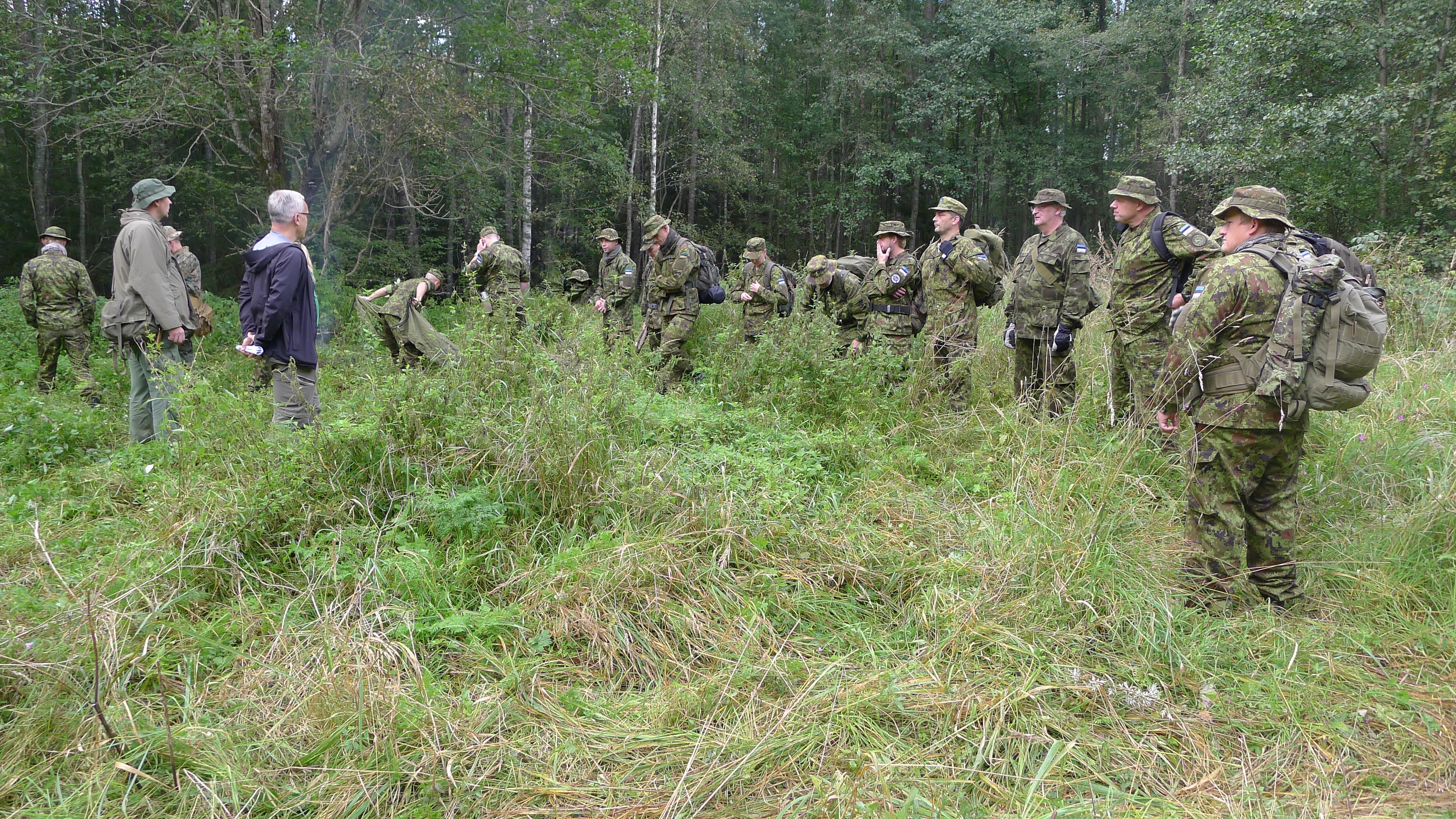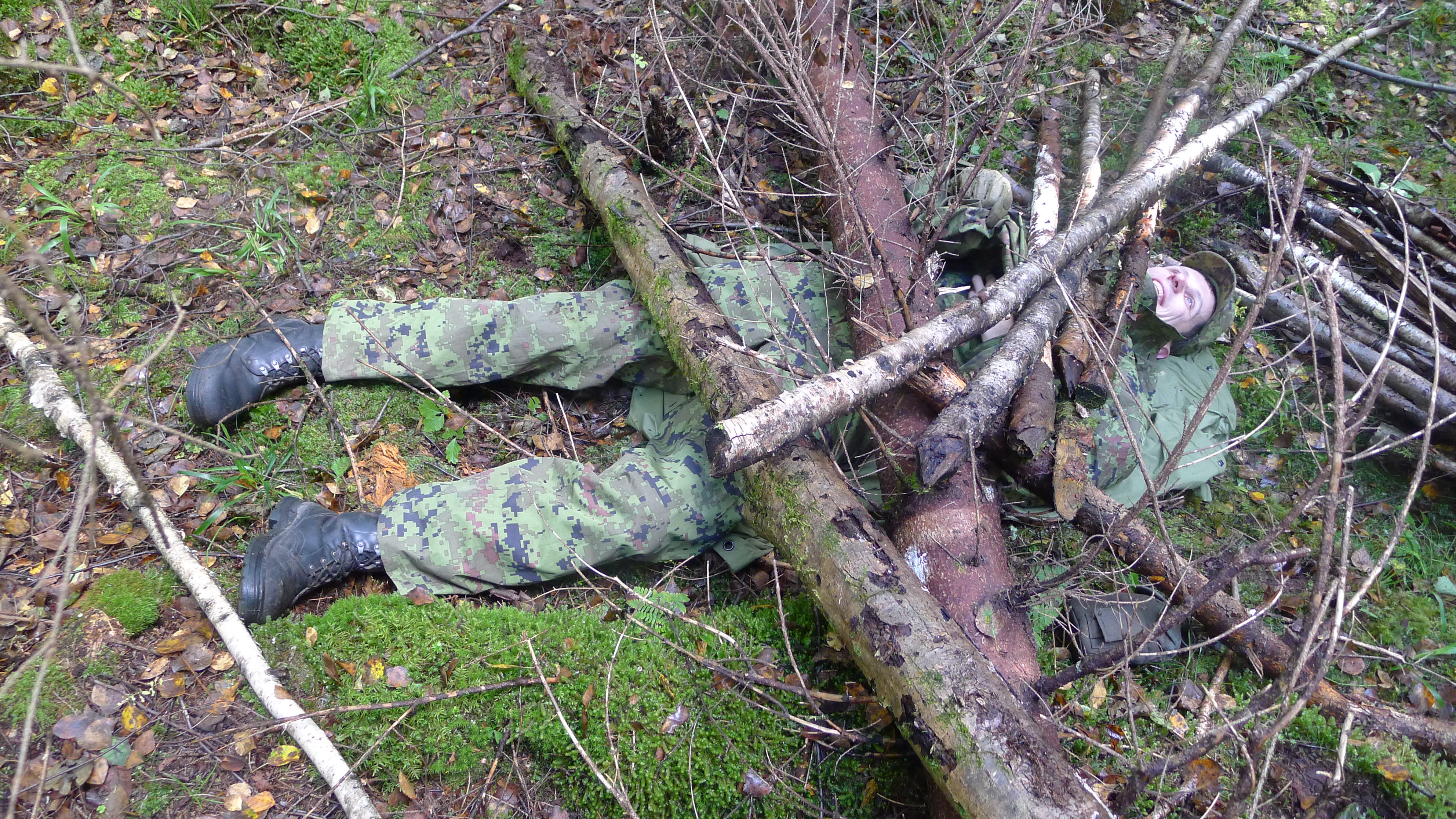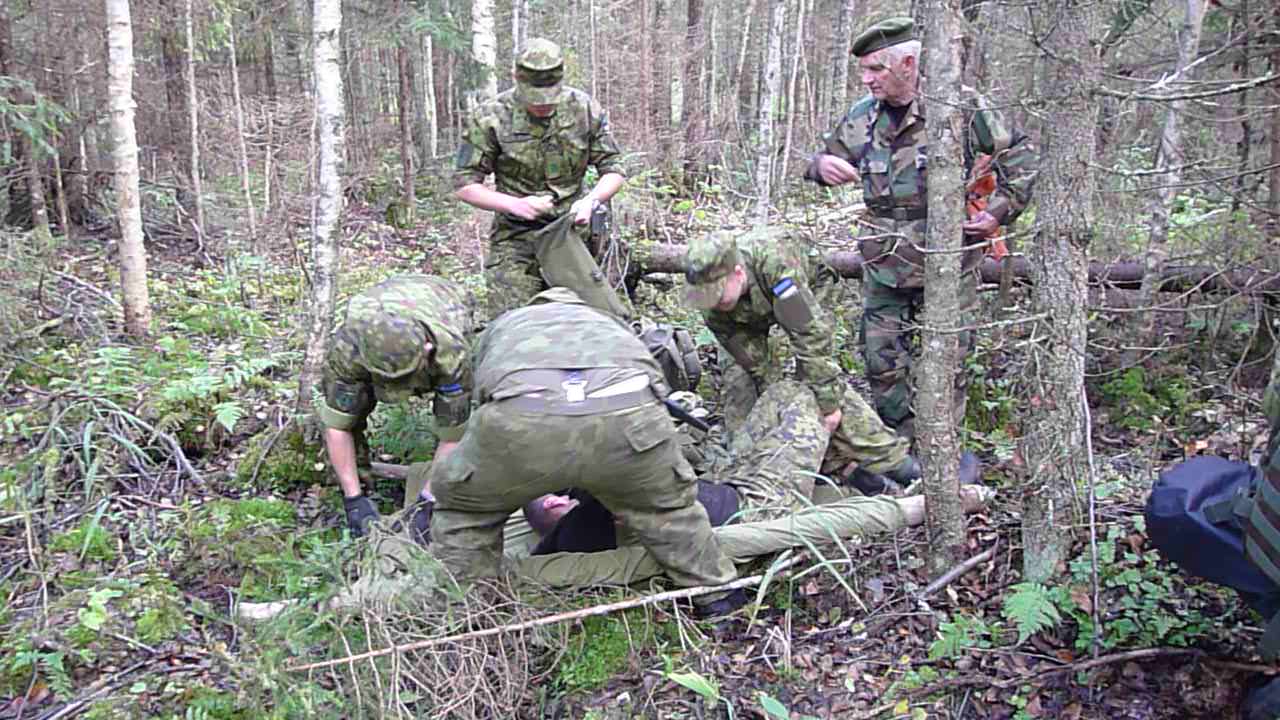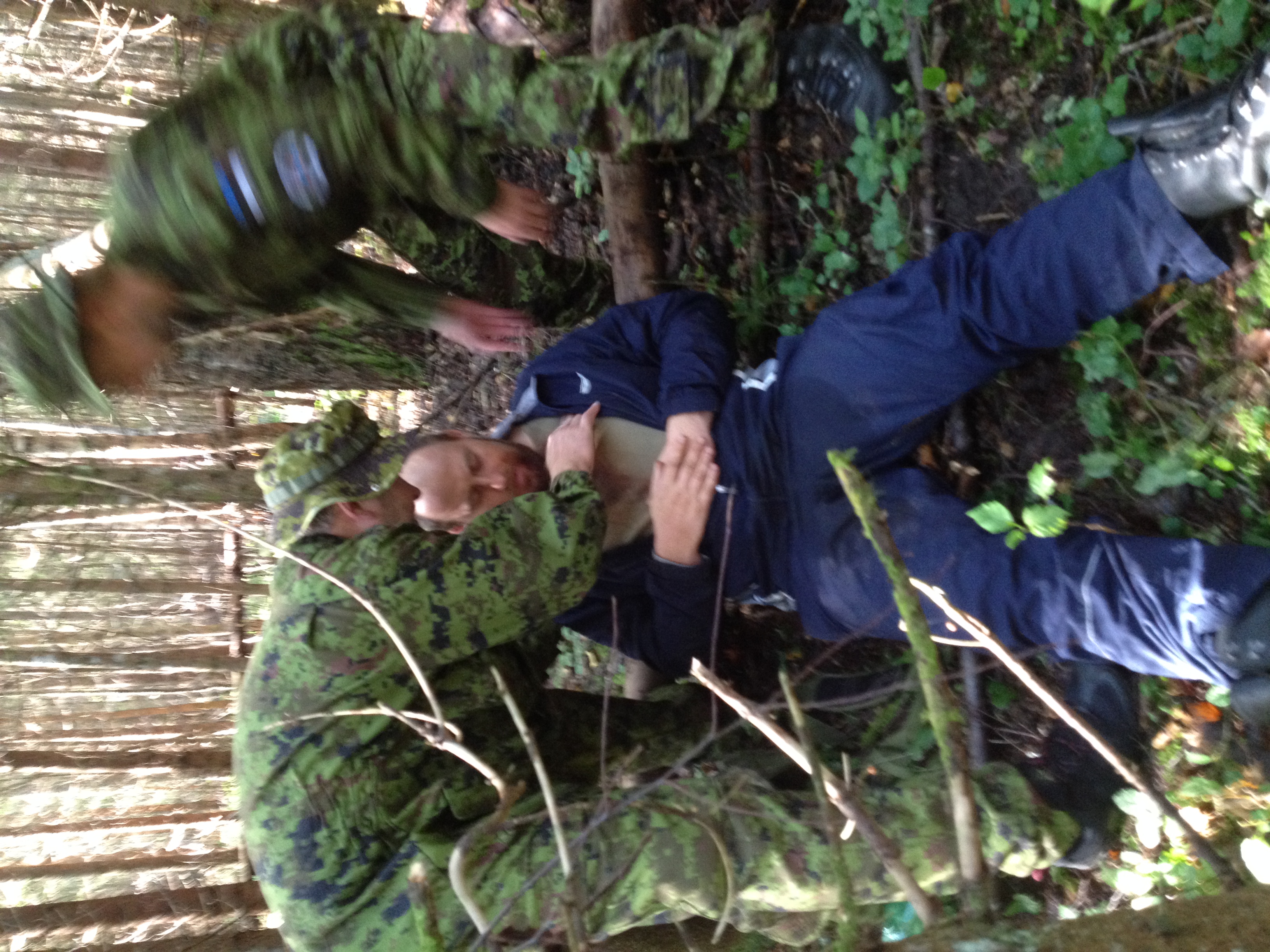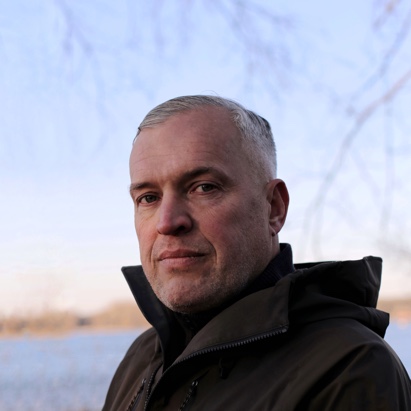Survival First Aid Training in Estland
Realistic training on a former Russian military base
Friday evening just before midnight, Erki Vaikre and I arrived at the Kirna Survival school which is basically a refitted old Russian army base situated in a vast Birch forest traversed by a river. My first visit here was two years ago.
There was a short briefing with Erki, SERE¹-Coordinator Estonian Defense League and a number of survival instructors. Together with Rein Paavo the programme coordinator and paramedic, we share a spacious room with good beds. It wasn’t long before I was fast asleep.
Target Audience
Thirty soldiers will take part in this two-day basic first aid survival training, including a number of combat medics (in training), platoon leaders, SF recon men and reservists. Some of them have a lot of medical knowledge and others hardly have any. It is a mixed group and most of the participants don’t know each other or hardly at all.
Objectives
One of the most important objectives is to increase their skills of acute medical first aid in the field in quite a limited time span. In addition, aspects of survival and medicine need to be integrated in their overall approach and consciousness.
Basic training
The first day the men and women receive practical and theory both outside and in the classroom from 08.30-21.30. A very intense day in which I will not participate.
Linking
My contribution consists of linking the various programme elements into a complex and realistic disaster scenario, whereby insight in the (non-tactical) situation, cooperation, leadership and skills in the area of acute medical care are to be linked to survival.
Consultation
In a number of short consultations with Erki and Rein, it becomes clear what their needs are; Setting up a mass-casualty scenario as a result of a natural disaster.
Birch forest
I decide to head in to the birch forest in search of inspiration and soon find a nice open area where I get comfortable on a fallen tree trunk. My inspiration comes naturally here. I make some notes based on a map of the area. It is an organic process; based on input I am able to quickly develop a realistic scenario.
Scenario-building
In this scenario there is very heavy rainfall, flooding and a total breakdown of critical infrastructure including emergency communication systems. The whole Baltic area has been hit, the capital Tallinn is without power and water and all available emergency relief is geared to the city. Little or no help can be given to the surrounding areas.
Flooding
In the area around Kirna, the river has flooded and a large area is now inundated.
Civilians are in distress. Charlie Company (10 m/f) start their search but are hit by a heavy thunderstorm and run into difficulty when trees start falling and lighting hits. Coming from opposite directions, Alpha and Bravo Company will head for a central point just east of the base. Alpha Company will also need to cross the river. Once arrived at the assembly point, new information is provided on Charlie Company’s location. The two commanding officers will need to consult with each other on how to proceed.
Preparation
Together with an SF Platoon commander who knows the area well, I scout the area. It soon becomes clear that the perfect location for the exercise is just a 10 minute walk from the base, as the woods there are already dense and difficult to enter. Together with Erki we then drive to the Kaitsiilit, the Civil Defence who own a well-equipped case of grease paint. The building exudes a cold war atmosphere with narrow hallways full of filing cabinets, desks with phones and maps on drab walls. There are boxes of stuff everywhere. Fascinating to see. I am busy getting ready all day; making sketches of the trauma for each wounded patient and maps of the area for the commanders and instructors so that everyone will have an idea of where the exercise will take place. It is far past midnight before I manage to get to bed.
Survival Medicine
There is no help in this scenario; each unit is on its own.
It will be at least a week or two before any substantial help will arrive from outside of the disaster area. The troops only have the highly necessary materials, basic first aid supplies and hardly any medicine. This truly is where survival meets medicine. The Baltic and Scandinavian people are still used to gathering medicinal and edible plants for daily use. This angle will also be covered in the training.
Time span
I was ready at 08.00 this morning. The briefing started at 09.30. I then walked with the Charlie Company into the field to prepare the group of 10 men and women, place them in position and together with a number of instructors, use the make-up to create wounds.
At 10.00 Alpha and Bravo company got the start signal as the Charlie Company was now ready.
They were to arrive at the rendezvous point at 11.00 at the latest, but they got there sooner than expected.
Scenario
Even communication and cooperation went smoothly. Only when reaching the Incident location did it become hectic and chaotic as was expected.
Triage was established and soon an assembly point for the wounded was established outside of the disaster area.
A lot of good remarks can be made about this training. All patients were relocated to the AP and all able bodies worked hard to create a suitable shelter to provide protection from the elements and a number of fire places, giving the patients a better chance of survival.
Leadership
It was interesting to see how the male commanding officer stepped aside for the female incident commander; she was responsible for the AP and managed it with great dedication. Although the start of the first aid was chaotic, the teams were able to create a semblance of order within the hour and to streamline medical assistance.
Herbal Medicine
The input of the Finnish border patrol officer and survival-instructor Veikko Piironen (72) turned out to be invaluable. He quickly gathered all kinds of edible and medicinal plants that could be used to treat the wounded and to calm them. The exercise ended at 13.15 and we all gathered in the classroom for the final evaluation.
Evaluation
The troops, instructors and practical teachers unanimously proclaimed the exercise a success. A type of training that was very instructive. The old training style, let’s call it the old-Russian method, is no longer applicable. In our time, where complex challenges can arise anytime and anywhere in the world; you will need to support people and teach them how to utilise their own and each others’ strength, intelligence and abilities. Communication, trust and cooperation are key elements in this respect.
Departure
Together with Mark and a group of Finnish survival-instructors, I left at 14.00 back to Tallinn where I took the 18.30 plane to Zürich with a brief stopover in Oslo. Yet another great adventure.
¹SERE: Survival, Evasion, Resistance and Escape
